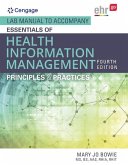For courses in foodservice management or administration; hospitality management; quantity food production and/or purchasing; foodservice accounting/financial management; menu planning; foodservice marketing/merchandising, or related topics.
Foodservice Operations for Today’s College Students
Authored by leading industry experts with years of teaching experience, the Thirteenth Edition of Foodservice Management: Principles and Practices offers a comprehensive, current, and practical overview of foodservice operations and business principles. Covering topics like food safety, human resources, finance, equipment, design, marketing, and filled with real-life case studies, this text gives college students a deep understanding of the issues they will face in any type of foodservice operation. Rich with graphics and photos, its visually appealing design is organized for maximum student engagement and understanding. This edition has been updated to reflect new trends in sustainability and food safety issues.
Features + Benefits
Designed for easy understanding:
Logical flow of material is organized to help students build knowledge one key concept at a time, with chapter introductions that link directly to previous chapters, giving students the solid foundation they need to learn each new concept.
Extensive use of graphics and photos makes the text more visually interesting and easier to understand, helping students absorb complex concepts more rapidly.
Graphics, many created by a leading foodservice design consultant who specializes in college and university foodservice facilities, make the book more visually compelling, and key concepts more intuitively easy to understand.
Key terms are boldfaced, with definitions in the margins, so students understand key terms immediately and jargon never becomes an obstacle to understanding.
Key concepts are highlighted throughout each chapter, helping readers focus on the most important concepts they need to understand, and review more efficiently.
Study and review help:
Review questions at the end of each chapter pinpoint key concepts for review, helping students confirm their understanding before moving forward.
Critical-Thinking questions challenge students to think conceptually in applying the concepts to real-world situations and promote deeper understanding and synthesis of the material.
Real-life examples and authorities:
Authored by leading industry experts who work in the industry and teach this content in university settings, giving students confidence that they are receiving accurate, useful information from people who know how to present it exceptionally well.
A running case study, based on the actual University of Wisconsin, Madison University Dining Services operation, demonstrates how large-scale campus foodservice operations actually work and provides a strong personal link for college students.
NEW! Up-to-date case studies at the end of each chapter cover everyfacet of the foodservice industry, such as healthcare, military, corrections, retail, schools, etc., andallow students to apply the principles presented in the chapter in a practical way.
Focus on trends and current events:
Foodservice industry timeline traces the origins of many of today’s leading restaurants, and ends with the industry’s latest innovations. Chapter content embedded in the timeline gives students the context they need to understand key trends and concepts.
Coverage of the latest trends and industry statistics relating to the foodservice industry, food safety, equipment and design, performance improvement techniques, financial management, and more presents the very latest data, reflecting the realities of today’s industry and offering the information students need to succeed.
Focus on sustainability in each chapter covers crucial new issues that influence every aspect of foodservice management. Information is presented with strong emotional resonance to many students so they can succeed in foodservice environments that must respond to an increased consumer demand for sustainability.
Extensive coverage of food safety including changes in federal food safety legislation, HACCP updates based on FDA’s latest manuals, and updated coverage of foodborne pathogens and illnesses responds to the dramatic growth in concern about food safety in both the industry and among consumers.
Greater focus on culinary issues reflect the important changes in consumer expectations and helps students provide foodservices that meet consumers’ dramatically heightened culinary expectations.
NEW! All information has been updated to comply with the 2013 Food code
NEW! Addition of regulations and issues that need to be considered when buying locally addresses the widespread and growing movement to buy locally.
NEW! Impact of new legislation such as the Affordable Care Act, Healthy Hunger-Free Kids Act, and new minimum wage laws on the foodservice industry and other legal issues that impact foodservice management, such as due process and just cause for dismissals and conflict dispute resolution and right to work.
NEW! Section on disaster planning in Chapter 3.
NEW! Section on microbiology in Chapter 3 adds foundational information for food safety program planning.
Up-to-date equipment information:
Coverage of the latest in foodservice equipment design–in a thoroughly revised chapter on the topic, prepares students to work with and make decisions about the newest equipment.
NEW! Addition of the latest in accelerated cooking technologies, such as induction and accelerated cooking ovens.
NEW! Factors to consider when buying warewashing equipment.
NEW! Explanation of LEED rating system and the very latest in lighting technology including LED, OLED, and LED panel lighting.
Business issues:
Extensive discussion of the systems model helps students understand how all the elements of foodservice operations fit together.
State-of-the-art performance improvement techniques, including Six Sigma, Lean Six Sigma, and the PDCA cycle, help students participate successfully in crucially important performance improvement initiatives that can keep foodservice operations profitable and viable.
In-depth information on accounting and finance, including the purpose, branches, and uniform systems of accounting; Generally Accepted Accounting Principles; financial statements, and financial analysis gives students the background they need to work with or in financial management in foodservice operations.
NEW! Information on using social media for marketing purposes.
NEW! Coverage of the latest employee motivation enhancement, such as employee worker engagement and leadership rounding.
Part 1 The Foundations 1
Chapter 1 The Foodservice Industry 3
Chapter 2 The Systems Approach 33
Part 2 The Fundamentals 57
Chapter 3 Food Safety 59
Chapter 4 Facility Sanitation and Safety 93
Chapter 5 The Menu 117
Part 3 The Operational Functions 151
Chapter 6 Purchasing 153
Chapter 7 Receiving, Storage, and Inventory 186
Chapter 8 Production 202
Chapter 9 Service 228
Part 4 The Facilities 249
Chapter 10 Facilities Planning and Design 251
Chapter 11 Equipment and Furnishings 289
Chapter 12 Resource Conservation 313
Part 5 The Management Functions 331
Chapter 13 Organizational Design 333
Chapter 14 Leadership 357
Chapter 15 Human Resource Management 381
Chapter 16 Performance Improvement 411
Chapter 17 Financial Management 437
Chapter 18 Marketing 467
Appendix A Principles of Basic Cooking 483
Appendix B Foodservice Equipment 491
Index 511
For courses in foodservice management or administration; hospitality management; quantity food production and/or purchasing; foodservice accounting/financial management; menu planning; foodservice marketing/merchandising, or related topics. Foodservice Operations for Today's College Students Authored by leading industry experts with years of teaching experience, the Thirteenth Edition of Foodservice Management: Principles and Practices offers a comprehensive, current, and practical overview of foodservice operations and business principles. Covering topics like food safety, human resources, finance, equipment, design, marketing, and filled with real-life case studies, this text gives college students a deep understanding of the issues they will face in any type of foodservice operation. Rich with graphics and photos, its visually appealing design is organized for maximum student engagement and understanding. This edition has been updated to reflect new trends in sustainability and food safety issues.
Foodservice Operations for Today’s College Students
Authored by leading industry experts with years of teaching experience, the Thirteenth Edition of Foodservice Management: Principles and Practices offers a comprehensive, current, and practical overview of foodservice operations and business principles. Covering topics like food safety, human resources, finance, equipment, design, marketing, and filled with real-life case studies, this text gives college students a deep understanding of the issues they will face in any type of foodservice operation. Rich with graphics and photos, its visually appealing design is organized for maximum student engagement and understanding. This edition has been updated to reflect new trends in sustainability and food safety issues.
Features + Benefits
Designed for easy understanding:
Logical flow of material is organized to help students build knowledge one key concept at a time, with chapter introductions that link directly to previous chapters, giving students the solid foundation they need to learn each new concept.
Extensive use of graphics and photos makes the text more visually interesting and easier to understand, helping students absorb complex concepts more rapidly.
Graphics, many created by a leading foodservice design consultant who specializes in college and university foodservice facilities, make the book more visually compelling, and key concepts more intuitively easy to understand.
Key terms are boldfaced, with definitions in the margins, so students understand key terms immediately and jargon never becomes an obstacle to understanding.
Key concepts are highlighted throughout each chapter, helping readers focus on the most important concepts they need to understand, and review more efficiently.
Study and review help:
Review questions at the end of each chapter pinpoint key concepts for review, helping students confirm their understanding before moving forward.
Critical-Thinking questions challenge students to think conceptually in applying the concepts to real-world situations and promote deeper understanding and synthesis of the material.
Real-life examples and authorities:
Authored by leading industry experts who work in the industry and teach this content in university settings, giving students confidence that they are receiving accurate, useful information from people who know how to present it exceptionally well.
A running case study, based on the actual University of Wisconsin, Madison University Dining Services operation, demonstrates how large-scale campus foodservice operations actually work and provides a strong personal link for college students.
NEW! Up-to-date case studies at the end of each chapter cover everyfacet of the foodservice industry, such as healthcare, military, corrections, retail, schools, etc., andallow students to apply the principles presented in the chapter in a practical way.
Focus on trends and current events:
Foodservice industry timeline traces the origins of many of today’s leading restaurants, and ends with the industry’s latest innovations. Chapter content embedded in the timeline gives students the context they need to understand key trends and concepts.
Coverage of the latest trends and industry statistics relating to the foodservice industry, food safety, equipment and design, performance improvement techniques, financial management, and more presents the very latest data, reflecting the realities of today’s industry and offering the information students need to succeed.
Focus on sustainability in each chapter covers crucial new issues that influence every aspect of foodservice management. Information is presented with strong emotional resonance to many students so they can succeed in foodservice environments that must respond to an increased consumer demand for sustainability.
Extensive coverage of food safety including changes in federal food safety legislation, HACCP updates based on FDA’s latest manuals, and updated coverage of foodborne pathogens and illnesses responds to the dramatic growth in concern about food safety in both the industry and among consumers.
Greater focus on culinary issues reflect the important changes in consumer expectations and helps students provide foodservices that meet consumers’ dramatically heightened culinary expectations.
NEW! All information has been updated to comply with the 2013 Food code
NEW! Addition of regulations and issues that need to be considered when buying locally addresses the widespread and growing movement to buy locally.
NEW! Impact of new legislation such as the Affordable Care Act, Healthy Hunger-Free Kids Act, and new minimum wage laws on the foodservice industry and other legal issues that impact foodservice management, such as due process and just cause for dismissals and conflict dispute resolution and right to work.
NEW! Section on disaster planning in Chapter 3.
NEW! Section on microbiology in Chapter 3 adds foundational information for food safety program planning.
Up-to-date equipment information:
Coverage of the latest in foodservice equipment design–in a thoroughly revised chapter on the topic, prepares students to work with and make decisions about the newest equipment.
NEW! Addition of the latest in accelerated cooking technologies, such as induction and accelerated cooking ovens.
NEW! Factors to consider when buying warewashing equipment.
NEW! Explanation of LEED rating system and the very latest in lighting technology including LED, OLED, and LED panel lighting.
Business issues:
Extensive discussion of the systems model helps students understand how all the elements of foodservice operations fit together.
State-of-the-art performance improvement techniques, including Six Sigma, Lean Six Sigma, and the PDCA cycle, help students participate successfully in crucially important performance improvement initiatives that can keep foodservice operations profitable and viable.
In-depth information on accounting and finance, including the purpose, branches, and uniform systems of accounting; Generally Accepted Accounting Principles; financial statements, and financial analysis gives students the background they need to work with or in financial management in foodservice operations.
NEW! Information on using social media for marketing purposes.
NEW! Coverage of the latest employee motivation enhancement, such as employee worker engagement and leadership rounding.
Part 1 The Foundations 1
Chapter 1 The Foodservice Industry 3
Chapter 2 The Systems Approach 33
Part 2 The Fundamentals 57
Chapter 3 Food Safety 59
Chapter 4 Facility Sanitation and Safety 93
Chapter 5 The Menu 117
Part 3 The Operational Functions 151
Chapter 6 Purchasing 153
Chapter 7 Receiving, Storage, and Inventory 186
Chapter 8 Production 202
Chapter 9 Service 228
Part 4 The Facilities 249
Chapter 10 Facilities Planning and Design 251
Chapter 11 Equipment and Furnishings 289
Chapter 12 Resource Conservation 313
Part 5 The Management Functions 331
Chapter 13 Organizational Design 333
Chapter 14 Leadership 357
Chapter 15 Human Resource Management 381
Chapter 16 Performance Improvement 411
Chapter 17 Financial Management 437
Chapter 18 Marketing 467
Appendix A Principles of Basic Cooking 483
Appendix B Foodservice Equipment 491
Index 511
For courses in foodservice management or administration; hospitality management; quantity food production and/or purchasing; foodservice accounting/financial management; menu planning; foodservice marketing/merchandising, or related topics. Foodservice Operations for Today's College Students Authored by leading industry experts with years of teaching experience, the Thirteenth Edition of Foodservice Management: Principles and Practices offers a comprehensive, current, and practical overview of foodservice operations and business principles. Covering topics like food safety, human resources, finance, equipment, design, marketing, and filled with real-life case studies, this text gives college students a deep understanding of the issues they will face in any type of foodservice operation. Rich with graphics and photos, its visually appealing design is organized for maximum student engagement and understanding. This edition has been updated to reflect new trends in sustainability and food safety issues.








